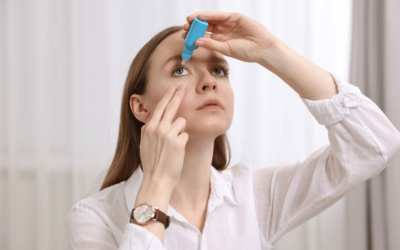Today, we are discussing a topic that affects many individuals—dry eyes. While artificial tears are a common and accessible remedy, they may not always be the best solution for everyone. Learn about the drawbacks of relying solely on artificial tears for dry eye relief and how you can manage your symptoms more effectively.
Understanding dry eye
Dry eye occurs when your eyes don’t produce enough tears or when your tears evaporate too quickly. It can lead to discomfort, blurred vision, and a sensation of having something in your eye. Many people turn to over-the-counter artificial tears as a convenient first line of defense, but this approach has limitations.
Drawbacks of using artificial tears
- Temporary relief: Artificial tears often provide only short-term relief. They may alleviate symptoms for a few hours, but they do not address the underlying causes of dry eyes.
- Frequency of use: To maintain comfort, some patients may need to apply artificial tears frequently throughout the day. This can be inconvenient and may not be practical for everyone, especially those with busy lifestyles.
- Preservatives: Many artificial tears contain preservatives to increase shelf life. For some individuals, especially those with sensitive eyes or who use drops frequently, these preservatives can cause irritation or exacerbate dry eye symptoms.
- Masking underlying issues: Relying on artificial tears can sometimes mask more serious underlying conditions. It’s essential to consult with an eye care professional to ensure that your dry eye symptoms are not a sign of a more serious problem.
- Limited effectiveness for severe cases: In cases of severe or chronic dry eye, artificial tears may not provide sufficient relief. These patients often require more advanced treatments.
Advanced treatment options at Lighthouse Vision
Dr. Stephen Dincher at Lighthouse Vision understands the complexities of dry eye syndrome and is equipped to offer effective dry eye treatment in Milford. During your comprehensive eye exam, Dr. Dincher can identify any underlying issues contributing to your dry eyes, ensuring you receive the right treatment for your specific case.
If artificial tears aren’t providing sufficient relief, we may recommend:
- Prescription eye drops: If over-the-counter eye drops are no longer effective, Dr. Dincher can prescribe medicated eye drops to help reduce inflammation or improve tear production.
- OptiLight IPL therapy: Lighthouse Vision is proud to offer OptiLight IPL (intense pulsed light) therapy. This cutting-edge treatment helps manage dry eye symptoms by addressing inflammation and improving the function of the meibomian glands, which play a crucial role in tear production.
- Lifestyle changes: We may also suggest lifestyle changes to help ease your symptoms, such as taking frequent breaks from screens or using a humidifier.
- Dry eye products: We can also recommend doctor-approved dry eye products from Dry Eye Rescue.
Conclusion
While artificial tears can be a helpful starting point for managing dry eyes, they are not a one-size-fits-all solution. If you find yourself frequently relying on them without experiencing substantial relief, it may be time to explore more advanced treatment options. Dr. Stephen Dincher and our team at Lighthouse Vision offer personalized care and cutting-edge treatments to improve your eye health and overall quality of life.
Don’t let dry eyes hold you back—schedule an appointment with Dr. Dincher today to explore the best options for your eye care needs!





